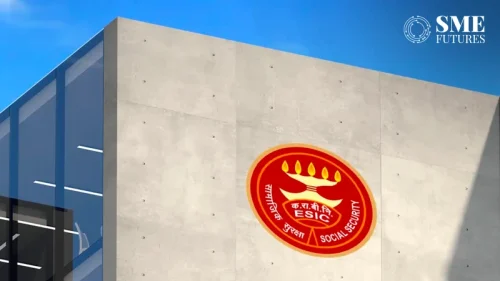At a time when the entire country is quarantined and businesses are marred by the COVID pandemic, Doordarshan – that has been struggling for its relevance for long – seems to have got a new lease of life as it is trying to make the most of this lockdown. The public broadcaster has started re-telecasting its epic mythological shows ‘Ramayana’ and ‘Mahabharatha’ in two slots, that also got the channel its share of positive publicity on social media platforms.
The Ramanand Sagar’s epic serial Ramayan has shattered all records by garnering highest TRPs for a Hindi general entertainment channel show since 2015. According to week (March 21-27) data of the TV monitoring agency BARC India, the four episodes of the Ramayan garnered an average of 28.7 million impressions. On Saturday, the show garnered 19.7 million impressions, while the Sunday episode recorded 37.9 million Impressions.
Doordarshan is just an example
The pandemic has led to a dramatic jump in the overall video streaming and TV viewership in India. There is much happening in the TV and smartphone landscape. As per the BARC-Nielsen study, television consumption and smartphone usage has grown significantly despite of other sectors going downwards.
Interestingly, the Prime Minister Narendra Modi address to the nation on complete lockdown garnered unprecedented viewership of 197 million people watching it on television across the country.

Not only this, to provide wholesome entertainment package in times of social distancing, four major broadcasting networks – Sony-run Sony Pal, Star India-run Star Utsav, Zee TV-operated Zee Anmol and Viacom18’s Colors bouquet channel Colors Rishtey – have come forward and decided to waive off all tariffs and charges for four channels for a period of two months.
Sunil Lulla, chief executive officer, BARC India, said, “These are unfortunate and unprecedented times. Working closely with Nielsen, we bring for our customers and stakeholders, this very significant and important update, on change in content and advertising consumption behaviour, with a significant population at home. We will report soon enough, the impact of total lockdown. Our respective brave teams are working (WFH) round the clock to ensure the TV measurement currency, continues uninterrupted.”
TV viewership booms
The study finds out that total TV consumption has increased by 8 per cent across India in the week ended March 20 – which was week one of COVID-19 lockdown. The growth in TV largely comes from non-prime time viewership. News gained by 57 per cent, followed by kid genre and movies have contributed to the growth in TV viewing.

With this surge in viewing, new average daily viewers grew by 32 million in the week, which gone up to total of 592 million TV audience.

With this, the total daily watch time for television has also jumped up by over 70 billion minutes in India. That means, total time spent by each viewer has gone up from 3 hours 46 minutes (in January) to 3 hours 51 minutes in the first COVID-19 week.
The report also reveals that Hindi speaking market (HSM) grew way better than South (5 per cent), which was driven by reach whereas South market was driven by both in terms of average time spent (ATS) on television and reach. The study data reveals that Hindi consumption increased by 7 per cent across the country.

According to the report, amid COVID-19 lockdown news section gained popularity with 57 per cent, while genre like movies and kids were 14 and 33 per cent. In times of crisis, when schools and colleges are shut, this is driving kids towards TV watching (+20 per cent). With corporate India getting into work from home mode, New Consumer Classification System (NCCS) shows an 11 per cent increase in viewership.

While sports genre witnessed major dip in terms of viewership as major leagues and sports events got cancelled. The 2020 Tokyo Olympic has also got delayed by a year as the International Olympic Association and Japan have rescheduled it for July 23 to August 8, in 2021.
Smartphone usage surges – social networking, news apps gain
With the rise in TV consumption, smartphone usage has also gone up. As per the survey, digital consumption of news and gaming shows huge increase in both incidence and time spent.

The time spent on smartphone during lockdown week one has also increased by 1.5 hours. This means time spent per user has gone up by 6.2 per cent, of which majority users are from the 35-44 year age category.
Number of new consumers grew mostly in mini-metros with 8 per cent growth, while metro and tier-2 cities both saw 6 per cent growth in new consumers. Female consumer ratio was more than male consumers by one per cent.

Moreover, due to uncertainty of the situation, people are spending more times on social networking and chatting. This also show a significant increase in time spent in week one by ~25 per cent, while the increase in calling time is only 4 per cent.
As per the study, the time spent on chatting has increased by 23 per cent and consumers spending time on social apps gained by 25 per cent. News app users have grown by 8 per cent, while the time spent has been increased by 17 per cent. The growth has been led by non-English News apps i.e. +87 per cent.
Not just apps, news websites were also visited by 26 per cent more users, while the number of website visits per user went up by 29 per cent.
On the other hand, almost all social networking apps such as Facebook, Instagram and TikTok have seen significant rise – not only in time spent/user/week but also in the sessions/user/week, according to the study.
Sharing her views on the current surge in smartphone usage, Dolly Jha, country leader Nielsen Global Media, South Asia said, “We are living through unprecedented times. Physical social distancing seems to have led to a phenomenal growth in virtual social togetherness with an almost 20 per cent increase in time spent per user on chats, social media and news in the last one week. And, we anticipate this to grow further.”
Shopping, travel apps take hit
With social distancing in practice, TV viewing and social media engagements were meant to grow, however, other segments such as shopping apps (-24 per cent users), food delivery apps (-13 per cent users)and travel apps congestions has gone down drastically in terms of users and time spent.

Impact on media and entertainment
It is clear from the study that the segments such as digital media, online gaming, radio and over the top (OTT) platforms are seeing benefit as consumers are forced to stay home and these mediums are their only source of entertainment.
However, the subsequent lockdown will have a definite impact on the media and entertainment sector which values at Rs. 1,887 billion estimated for calendar year 2019.
Large industries such as television, print, filmed entertainment, live events and out of home media are taking hit on their revenues, for instance, The Express Group has informed its employees for a temporary salary cut.
Similarly, television production activities have come to a virtual standstill to avoid large gathering of people on sets.
“With no new shows being produced, most General Entertainment Channels (GEC) have resorted to telecasting the old shows on repeat, to fill slots on their channels. Also, as most sports events scheduled in the months of March and April have been cancelled, viewership of sports channels shall drop,” CARE Ratings stated.
Bollywood, too, is on a standstill. Film producers have decided to halt their shooting for few weeks and pushed the release of many films to a later date. This is expected to create ripple effects as release dates of other movies that were expected to be released in the next 3-4 weeks shall also be postponed. Delay of movie releases also impacts box office collections not only in domestic market, but also abroad, as Indian movies have a large audience outside India.
“With film exhibitors across the country being temporarily shut, operating margins of such players shall take a hit as salaries and maintenance costs are inevitable expenses. We expect a loss of revenue of Rs. 5,800 to 7,800 crore per month for film exhibitors. This includes revenue from sale of movie tickets, sale of food and beverages within the theatres and advertising income,” the rating agency added.
M&E industry stares at a gloomy future
A FICCI-EY report, ‘The era of consumer A.R.T. – Acquisition Retention and Transaction’, states that the Indian Media and Entertainment (M&E) sector has reached Rs 1.82 trillion (US$25.7 billion) in 2019. It is further expected to grow at the rate of 10 per cent, crossing Rs 2.4 trillion (US$34 billion) by 2022.
Today India ranks as one of the fastest-growing app markets globally, where entertainment apps are driving significant consumer engagement. The rapid proliferation of mobile access is driving the demand, which is enabling on-demand, anytime-anywhere content consumption nationwide.
“With a population of 1.3 billion, a tele-density approaching 89 per cent of households, 688 million internet subscribers and nearly 400 million smartphone users, India’s telecom industry is poised to become the primary platform for content distribution and consumption,” according to the FICCI-EY report.
Commenting on the growth of the industry in future, Ashish Pherwani, partner and media and entertainment leader, EY India, said, “The M&E sector witnessed a surge in content consumption as digital infrastructure, quantum of content produced and per-capita income. As entertainment and information options grew and choice increased, the era of consumer acquisition, retention and transaction (ART) redefined the media value chain, leading to the emergence of many new trends and strategies across content, distribution, consumption and monetization.”
However, the coronavirus outbreak will have a significant adverse impact on the sector, but – according to Pherwani – the scale of the impact can’t be estimated yet as “the situation is still evolving both in India and many parts of the world.”










